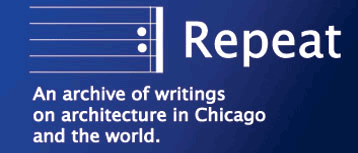

  |
||||
|
Holding
Out for More - The path to the new
|
Related Links |
||
|
Seattle was the native city of Minoru Yamasaki, architect of the World Trade Center. Among his Seattle structures is the 1964 IBM building, a severely modernist glass skyscraper with an arched arcade at street level, and the 1977 Rainier Tower, sometimes called the "wine glass" for the way its conventional, boxy office tower rests atop an 11-story "stem" that tapers inward as it descends, taking up only 25% of the site at its base.. Yamasaki's distinctive blending of technological bravado and a vaguely neoclassical gentility could be said to be a reflection of the Seattle, itself. Residents appear split in how they see the modesty of the city's architectural pretensions between those who view it as a mildly embarrassing failure of civic nerve, and those who consider it an expression of civic virtue, of refusing to be seduced by the superficial flash of superstar international architects. By 1988, the need for a new Seattle central library was becoming apparent, and, as in Chicago, the initial impulse was to make it a prop to private interests, using the building of a new library to shore up an ailing retail district, as part of a mixed use development that would have included a hotel, apartments and shops. Ultimately, Seattle's public spiritness won out. It was decided to demolish and build on the site of the current library, a modernist structure dating from 1960 that had itself replaced a classical-styled 1906 library whose construction had been funded by Andrew Carnegie. “It started in a very interesting way,” Koolhaas says of the process that led up to the new library, “because it was not a competition, but there was a competition to be the architect.” There was no jury, in the traditional sense. Instead, in 1999, the board asked architects interested in the project to submit their qualifications, and appointed a 14-person panel of architects, librarians, civic activists, a pastor and several corporate leaders. to help it evaluate and rank the entrants' credentials. OMA's involvement was almost accidental. "We were alerted to the presence of this competition by Josh's mother," says Rem Koolhaas, referring to Joshua Ramus, the Seattle native who was his partner in designing the library. Ramus flew back to his home town to throw OMA's hat in the ring. Overall, 28 firms responded, to be reduced in the second phase to five finalists. Just before the scheduled announcement, however, the five became three, as both Cesar Pelli and Norman Foster withdrew. There was talk Foster was put off by the strictures of working with a local partner, who wound up being the Seattle firm of LMN Architects. It may also have been a matter of money. The "interview" process carried all the time and expense of a full-up competition, but the library board made no offer to compensate the competitors. The first of the three finalists was Zimmer Gunsul Frasca out of Portland, which had already done a number of buildings in the Seattle area, although none were of international quality. The clear early favorite was Steven Holl, architect of the splendid Saint Ignatius chapel on the Seattle University campus. An area native, he had received strong local support, including an editorial endorsement from the Seattle Times. Jacobs led the board on fact-finding European tour. Some, believing the selection of Holl was almost a foregone conclusion, saw it as a waste of money. John Douglas Marshall of the Seattle Post-Intelligencer reports that the situation began to change when the troup was less than thrilled with Holl's Kiasma Museum in Helsinki, but were blown away by the bold thinking and visual dazzle of Koolhaas buildings like the Educatorium in Utrecht and Kuntshal in Rotterdam. They were particularly impressed on how Koolhaas was able to keep within an extremely tight budget at the Grand Palais at Lille, France. In the end, Koohaas and Ramus triumphed. Local reaction was generally optimistic, although one critic referred to the design as a "giant rabbit cage." In December of 1999, even as Jacobs was defusing still another firestorm over charges that bond issue funds were being diverted from the neighborhoods to finance the new central library, Koolhaas came to town to talk about his design. On his previous visits, people had stopped him in the street to discuss the project, and now an overflow crowd of over 600 people came out to hear him talk. Koolhaas stressed the role public participation would play in the evolution of the library's design, conceding that OMA had been working on the project for only about two months. However, the ideas behind the Seattle Public Library are the endpoint of over a decade of experimentation and thought.
© Copyright 2003-2006 Lynn Becker All rights reserved.
|